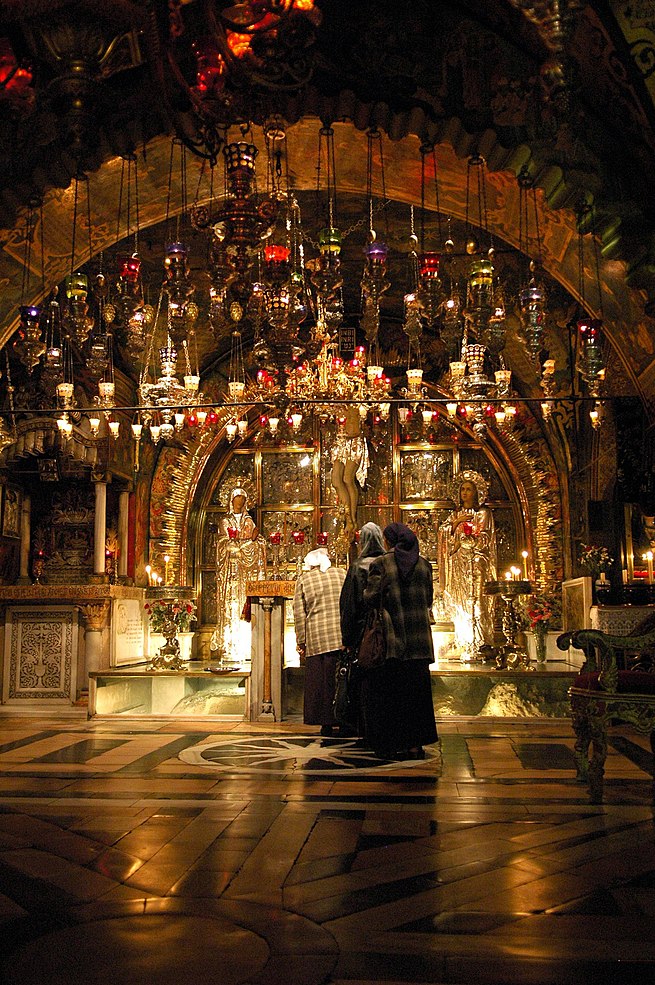
-
Calvary
Calvary, or Golgotha (Biblical Greek Γολγοθᾶ[ς] Golgotha[s], traditionally interpreted as reflecting Syriac (Aramaic) golgolta, as it were Hebrew gulgōleṯ (גולגולת), “skull”), was, according to the Gospels, a site immediately outside Jerusalem’s walls where Jesus was crucified.Matthew’s and Mark’s gospels translate the term to mean “place of [the] skull” (Κρανίου Τόπος Kraníou Tópos), in Latin rendered Calvariæ Locus, from which the English word Calvary derives.
Its traditional site, identified by Helena of Constantinople, the mother of Constantine I, in 325, is at the site of the Church of the Holy Sepulchre. A 19th-century suggestion places it at the site now known as Skull Hill, some 500 m to the north (200 m north of Damascus Gate). Historian Joan Taylor bases a location c. 175 metres south-southeast of the traditional site on her reading of textual evidence.
-
Calvary (noun)
A life-size representation of the crucifixion of Jesus Christ on a piece of raised ground.
-
Calvary (noun)
A series of representations of Christ’s Passion in a church.
-
Calvary (noun)
A strenuous experience.
-
Calvary (noun)
the hill outside Jerusalem on which Christ was crucified.
-
Calvary (noun)
a sculpture or picture representing the scene of the Crucifixion.
